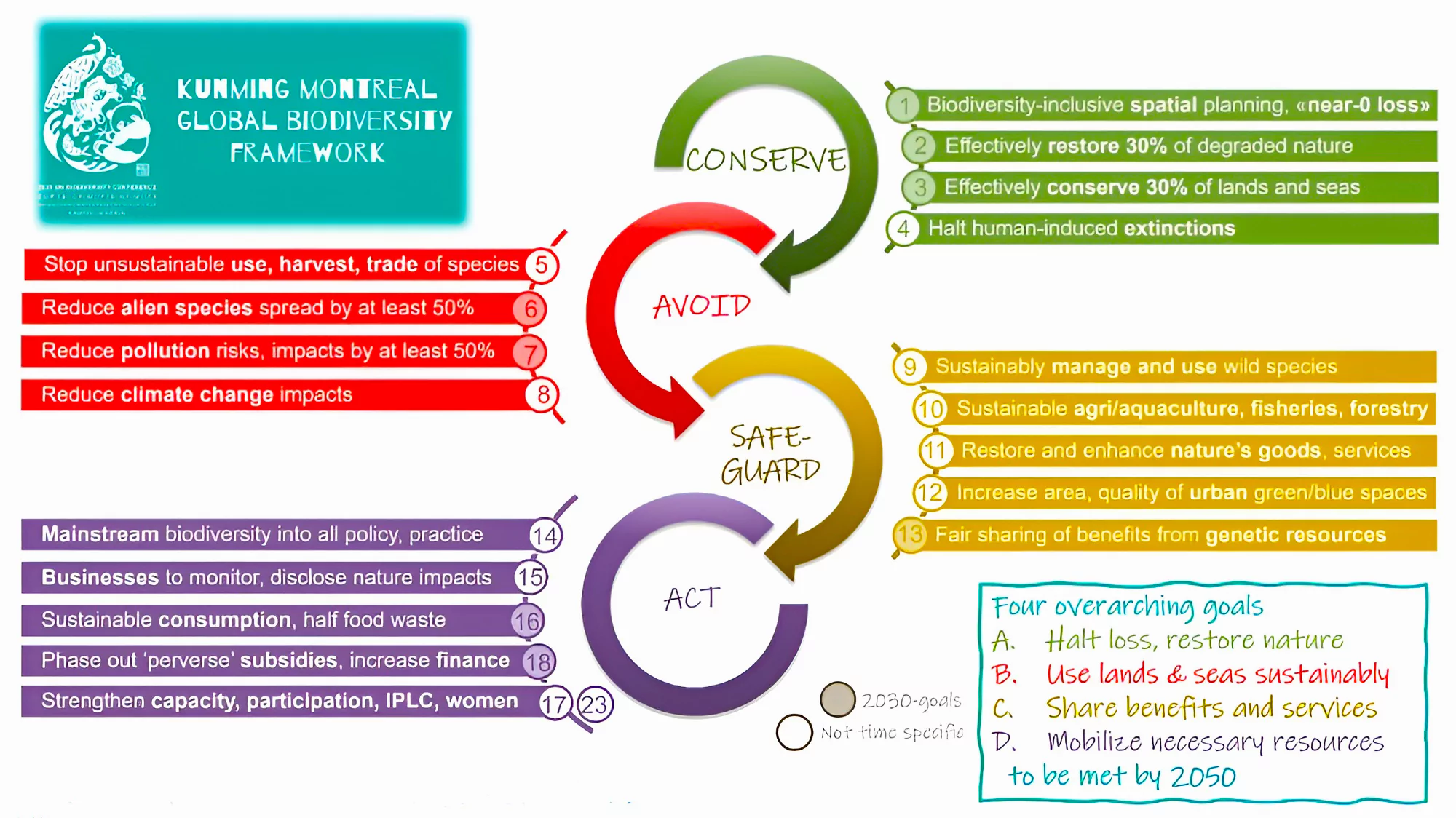Context
Recently, The 26th meeting of the Subsidiary Body on Scientific Technical and Technological Advice (SBSTTA-26) of the Convention on Biological Diversity (CBD) was held at Nairobi, Kenya.
Subsidiary Body on Scientific Technical and Technological Advice (SBSTTA)
- Establishment: It is formed by the Article 25 of the Convention on Biological Diversity
- About: It is an open-ended intergovernmental scientific advisory body providing the Conference of the Parties (COP) and its other subsidiary bodies, with timely advice relating to the implementation of the Convention.
- Functions: To provide assessments of the status of biological diversity; providing assessments of the types of measures taken in accordance with the provisions of the Convention; and responding to questions that the COP may put to the body.
|
26th meeting of the Subsidiary Body on Scientific Technical and Technological Advice (SBSTTA-26) of the Convention on Biological Diversity (CBD)
- The body recommended full implementation of the The Biodiversity Plan, which was adopted at Montreal in December 2022.
- The recommendations would be discussed upon further at the 16th meeting of the Conference of the Parties (COP16).
- COP16 will be held in the Colombian city of Cali from October 21-November 1, 2024.
- CBD’s Subsidiary Body on Implementation (SBI):The delegates of the scientific Body will also become a part of the meeting of the CBD’s Subsidiary Body on Implementation.
- Main Focus: Review of implementation, including updating of national biodiversity strategies and action plans; resource mobilization and financial mechanism; capacity building and development, technical and scientific cooperation, and knowledge management; cooperation with other conventions and international organizations.
- An expert group was also created to inform on the risks of living, modified fish.
Enroll now for UPSC Online Course
Issues Discussed at the Meeting
- Scientific and technical needs to support the implementation of the Kunming-Montreal Global Biodiversity Framework
- Monitoring framework for the Kunming-Montreal Global Biodiversity Framework: The work on monitoring Framework was advanced which would be used to track national, regional and global progress against the targets for 2030.
- Detection and identification of living modified organisms: The need for vigilance in detecting and identifying living modified organisms was re-emphasised with concerns being flagged about GM insect
- Risk assessment and risk management : New voluntary guidelines are recommended in the field of biosafety and biotechnology for risk assessment regarding engineered gene drives to strengthen transparency and scientific rigor of the process.
- Synthetic biology: Parties agreed on the need for capacity-building, technology transfer and knowledge-sharing to address the issue of equity in developing countries’ participation in the field of Synthetic Biology, where traits are deliberately introduced in the genetic material of organisms.
- Ecologically or biologically significant marine areas (EBSA): Setting the stage for a potential agreement to define EBSA and Conservation & sustainable use of marine and coastal biodiversity
- The decision is likely to be reached at COP16.
- Biodiversity and Health: It includes an updated version of the draft global action plan to mainstream biodiversity and health linkages into national policies.
The Kunming-Montreal Global Biodiversity Framework (GBF)

- Adoption: It was adopted during the fifteenth meeting of the Conference of the Parties (COP 15) 2022.
- Aim: The Framework sets an ambitious pathway to reach the global vision of a world living in harmony with nature by 2050 with key elements being the 4 goals for 2050 and 23 targets for 2030.
- This Framework supports the achievement of the Sustainable Development Goals and builds on the Convention’s previous Strategic Plans.
- Mechanism for Implementation: The Plan will include a monitoring framework for the GBF, an enhanced mechanism for planning, monitoring, reporting and reviewing implementation, the necessary financial resources for implementation, strategic frameworks for capacity development and technical and scientific cooperation, as well as an agreement on digital sequence information on genetic resources.
- Global Stocktake: At the COP16, There will be a global stocktake of the targets and commitments that have been set.
![]() 21 May 2024
21 May 2024

